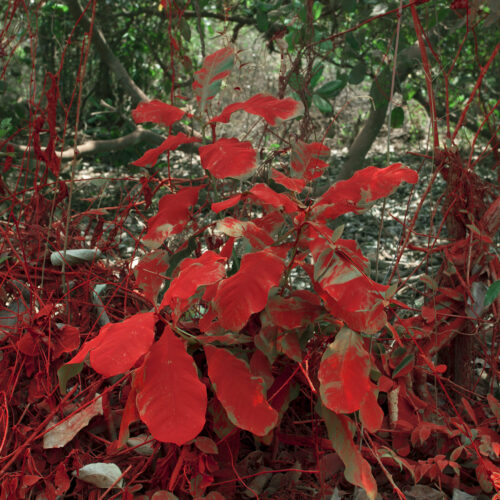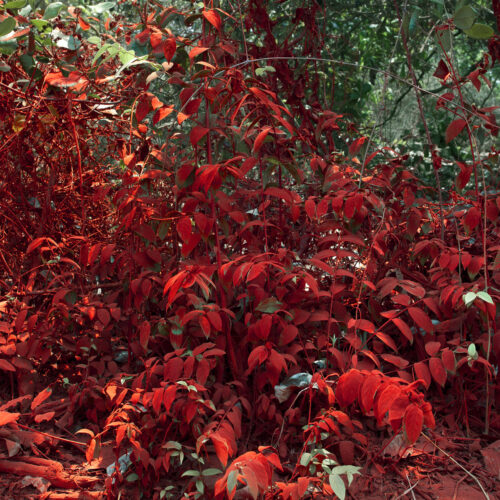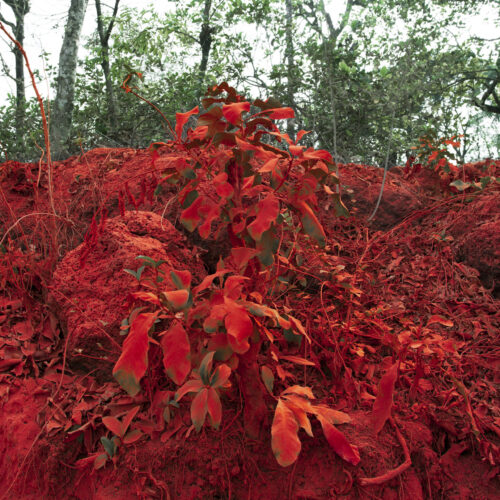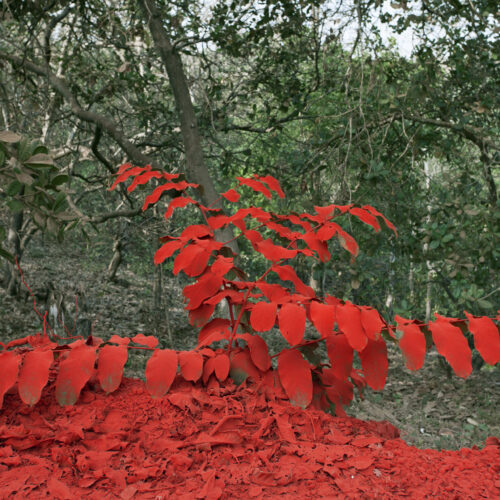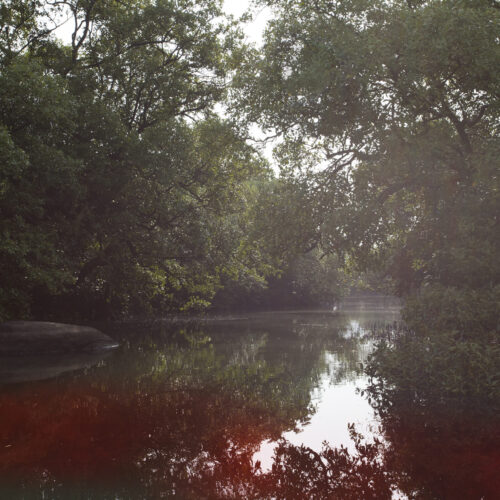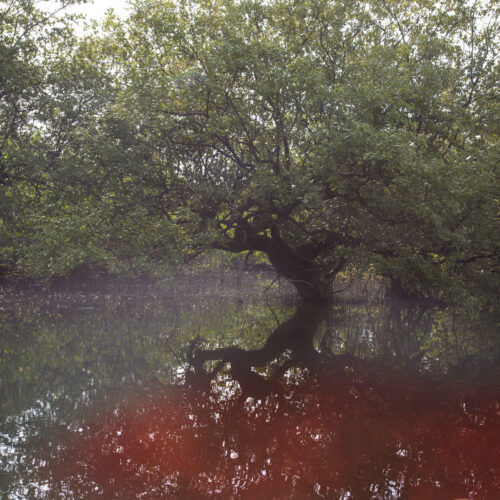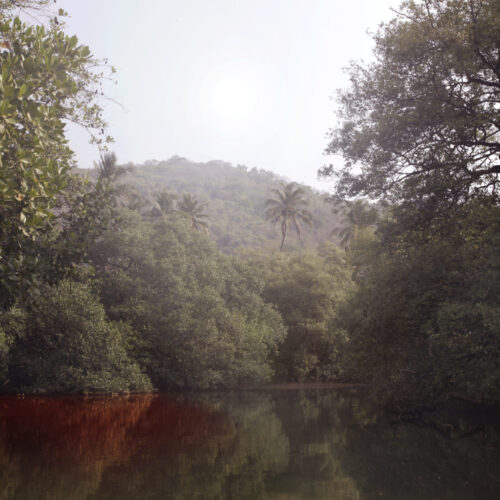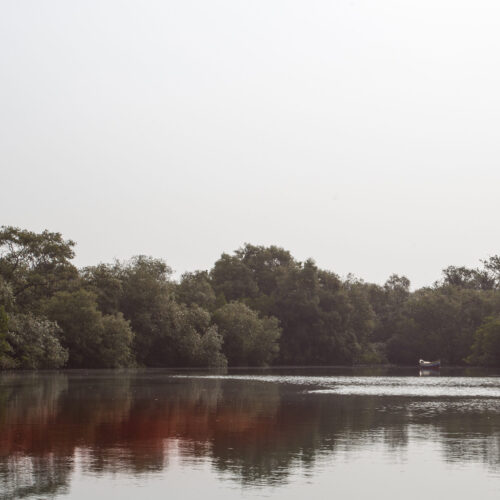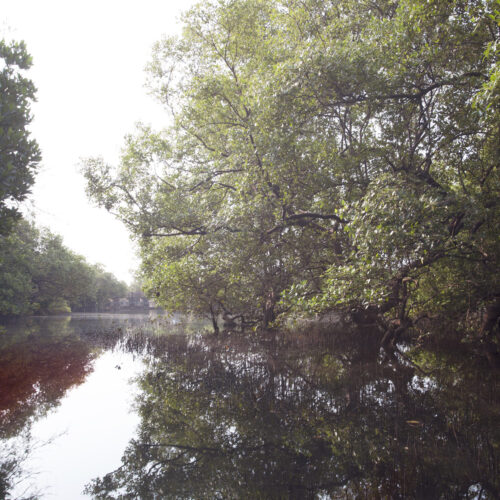LAAL
Escapar al paisaje omnisciente es una labor que recurre a la imaginación del que observa. La naturaleza no se planta ante nosotros, simplemente está con toda su capacidad de estar, apoderándose de toda su suficiencia de existir en ese lugar, en ese momento, en esa luz que la hace ser. Tampoco se encuentra en un estado de quietud, el movimiento corresponde a una transformación en sí misma o, mejor dicho, en un movimiento constante e introspectivo. El paisaje se modifica, no viene dado. Se reencarna en todas sus cualidades y es entonces cuando nosotros nos plantamos ante él. Habitamos el paisaje a través de nuestra mirada. Recorremos esa escena que se extiende ante nosotros buscando su misterio, embrujados por un deseo que no nos deja permanecer en reposo ante la existencia de algo que se nos escapa. Miramos confiados por su quietud, pero en realidad le hacemos ya, silenciosamente, una confesión que es un anticipo: el deseo de lo inabarcable se transforma en acto y nos identificamos con ese lugar. Hay entonces toda una serie de experiencias intermedias en las que se pueden distinguir los diversos aspectos de una progresiva introversión. En ese momento nos escindimos del mundo y retornamos a él y todos sus detalles, todos sus pliegues, cada una de las hojas de aquella naturaleza que observamos, se tornan hacia nosotros. En ese momento nos reconocemos en el paisaje, conquistamos un lugar que, en realidad, se encuentra más allá de lo que observamos. En ese instante nos apoderamos de la confluencia de lo ausente y el poder que ostenta la apariencia de los objetos reales para designar, detrás de ello, un espacio mágico.
Hay una determinación en la manera de permanecer en ese lugar. En mi caso, la elección viene dada a través del deseo de continuidad y la huella especificada por su carácter efímero. La intervención del paisaje no es más que introducirme en ese mecanismo de transformación hacia sí mismo. Por otra parte, es exponer o, mejor dicho, extraer una sensación dentro de un engranaje en perpetuo movimiento. Lo oculto se hace presente a través de la imaginación y de la presencia de ese lugar. También supone identificarte con tu sensibilidad, presentarse oblicuamente a través del reflejo que ofrece la imagen.
La luz define el color de un lugar. En India, las coordenadas de su geografía concretan la procedencia de esa luz que delimita la vitalidad de una comarca. Tengo que admitir que no pude escapar de lo anecdótico de su emplazamiento y me dejé hechizar por la vibración de un color determinado. Laal significa rojo en hindi, pero también es vitalidad, energía, riqueza, pasión, fortuna, felicidad, pureza. Es un color espiritual, no un símbolo cedido por la interpretación de todas esas representaciones (sustantivos por su existencia real, imprescindible, esencial). La presencia de ese color, que viene antes de su apariencia, se encuentra en el paisaje colmado: como un rayo que atraviesa un estado de determinación para cumplir su propia aparición. No había opción, nada de escaparse hacia lo conceptualizado de un color. Era la existencia en sí misma venida de ese lugar. Era la potencia de la diosa Shakti con su seductora existencia a la que das alcance después de una larga espera, después de un recorrido, de un viaje, de un camino que es el significado en sí mismo.
Esa ha sido mi aportación al paisaje: observarlo, habitarlo, regalarle una nueva apariencia efímera, demasiado breve en algunos casos (el agua en su fluir, no deja casi espacio para la presencia simultánea de la mirada deseante y el intruso soluto), a través de la pintura con pigmento rojo. Identificar el paisaje en lo intacto y fecundo de su naturaleza, alterarlo dentro de su dinámica transformadora a través de la escenificación. La importancia radica en saber encontrar en la propia intuición creadora el misterio de un lugar, aunque sea desconocido. Y así, le corresponde a la imaginación la búsqueda de la metamorfosis que hará ese paisaje compatible con la aparición de la intensidad de ese lugar. Por decreto de la imaginación, seducida por la pureza de los colores de ese espacio, la representación se hace dueña de la ductilidad del paisaje. Paisaje líquido (laal paani), paisaje vegetal (laal patti), señalado descaradamente con la intensidad de un pigmento superpuesto a su color original. Cubriendo su superficie para apuntar a las texturas que definen su presencia. En la relación entre los colores, no solamente variarán las distancias, sino que el objeto mismo se deformará y adoptará aspectos nuevos. Y de ahí se vuelve a una nueva mirada (la de la imagen), a un deseo hacia un nuevo misterio sin perder su intensidad, sin modificar las esperanzas de la esencia que ofrece la presencia ante un paisaje.
Nota aclaratoria: el trabajo con el rojo no persigue representar el abatimiento o la destrucción del paisaje a través del simbolismo una herida sangrante, sino identificarse con lo que emana de un lugar, de una cultura y de una luz que la define en su esencia.
LAAL
Escaping from the omniscient landscape is a task that demands imagination from the observer. Nature does not seek us out to challenge us: it is simply there, in all its ability to be there, seizing every opportunity it has to exist in that particular place at that particular moment and immersed in the light that endows it with existence. Neither is it in a state of stillness. Its movement reflects its own inner transformation, or rather its constant, introspective evolution. A landscape changes; it is not predefined. It reincarnates again and again in all its qualities, and it is then when we stand before it. We inhabit landscape through our gaze. We scan the scene in front of us searching for its mystery, haunted by a longing that allows no relaxation in the presence of something we cannot quite grasp. We look at it reassured by its stillness, but deep inside we make a silent, prophetic confession: our desire for vastness transmutes into action, and we identify ourselves with the setting. There then follows a whole series of intermediate experiences in which the diverse aspects of a steady process of introversion are clearly revealed. At that point, we become separated from the world, and then return to it, and all its features and details, every single leaf of the Nature we are so avidly contemplating, turn towards us. We recognise ourselves in the landscape, and we take possession of a place that is really beyond what we can see. We instantly assume control over the convergence of absent elements with the power of real objects to define a magic space beyond it simply by virtue of their visual appearance.
There is always a determination in the way we linger in a place. In my case, this is the result of a desire for permanence and the distinct mark left by its ephemeral nature. Intervening in the landscape is merely a way of forming part of that mechanism of inner transformation. It also allows us to reveal, or rather to extract, a sense of feeling from a machine in perpetual motion. Whatever is hidden becomes apparent through imagination and through the sheer presence of a place. Intervention is also a means to identify with your sensitivity, to obliquely present yourself through the reflected image.
Light defines the colour of a place. In India, geographic coordinates determine the origin of the light that encompasses a region’s liveliness. I must admit, I was captivated by this local idiosyncrasy and hypnotised by the vibration of one specific colour. Laal is Hindi for “red”, but it also means vivacity, energy, richness, passion, fortune, happiness, purity. It is a spiritual colour, not merely a symbolic interpretation of all those qualities (which are substantive for their real, indispensable, essential existence). The presence of that colour, which precedes its actual appearance, can be found in the landscape, fulfilling its own occurrence through a state of determination, like a flash of lightning. There is no choice, no escapism through the conceptualisation of a colour. It is existence itself, emanating from that place; the power of the goddess Shakti and her seductive presence, arrived at after a long wait, after a trek, a journey, a path that constitutes meaning itself.
Such has been my contribution to the landscape: observing it, inhabiting it, endowing it with a new, ephemeral appearance – sometimes even too brief an appearance (flowing water hardly leaves room for the simultaneous presence of the inquiring gaze and the soluble intruder) by painting it with red pigment, identifying its inherent intactness and fertility, and using visual representation to alter it within its own transformational dynamic. What is important is to be able to discover a place’s mystery in one’s own creative intuition, even if the place is unfamiliar. It is up to the imagination to seek the metamorphosis that will make that particular landscape compatible with its perceived intensity. Obliged by imagination and seduced by the purity of the colours in that space, its representation assumes the adaptability of the landscape. The landscape, either watery (laal paani) or vegetal (laal patti), is brazenly signalled through the intensity of a tincture superimposed on its original colour, which covers its surface to highlight the textures that define its presence. In the relationship between the colours, not only will distances vary: the object itself will also change shape and adopt new attributes. From there, there emerges a fresh gaze, one fixed on the image, a desire for a new mystery, just as intense and with the same hope of experiencing the essence of having a landscape in front of us.
Explanatory note: the use of red is not intended to represent the damage or destruction of the landscape through the symbolism of a bleeding wound; rather, it illustrates what emanates from the location, the culture and the light that together define a landscape’s essence.

